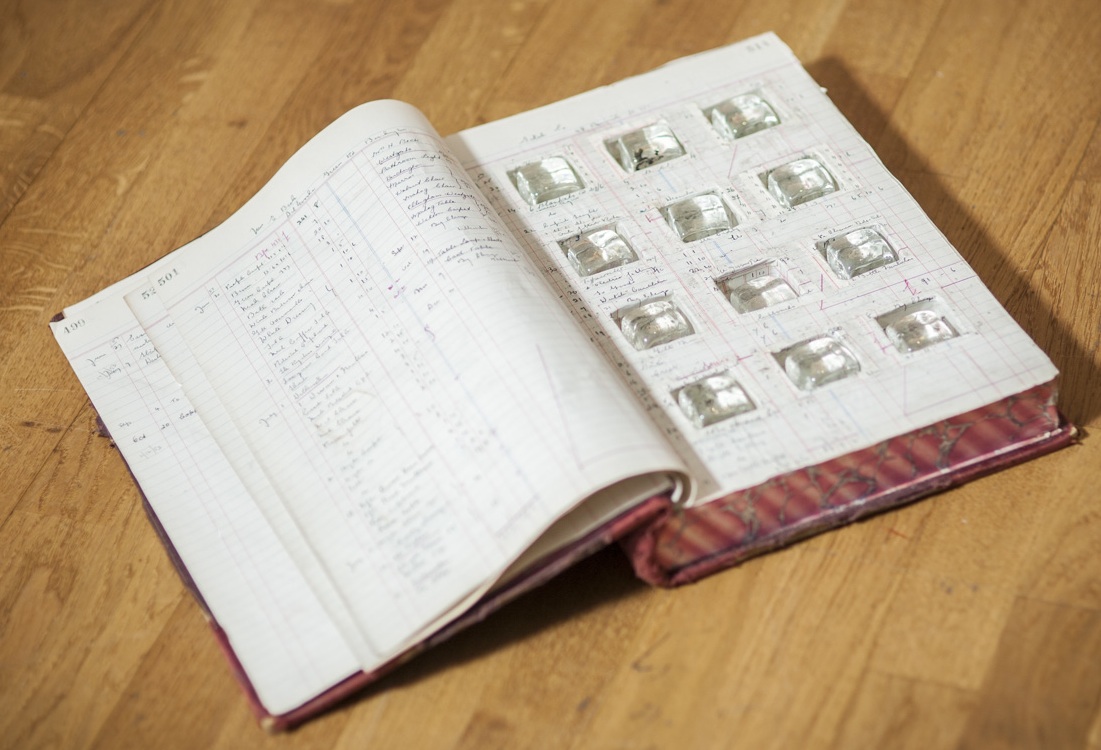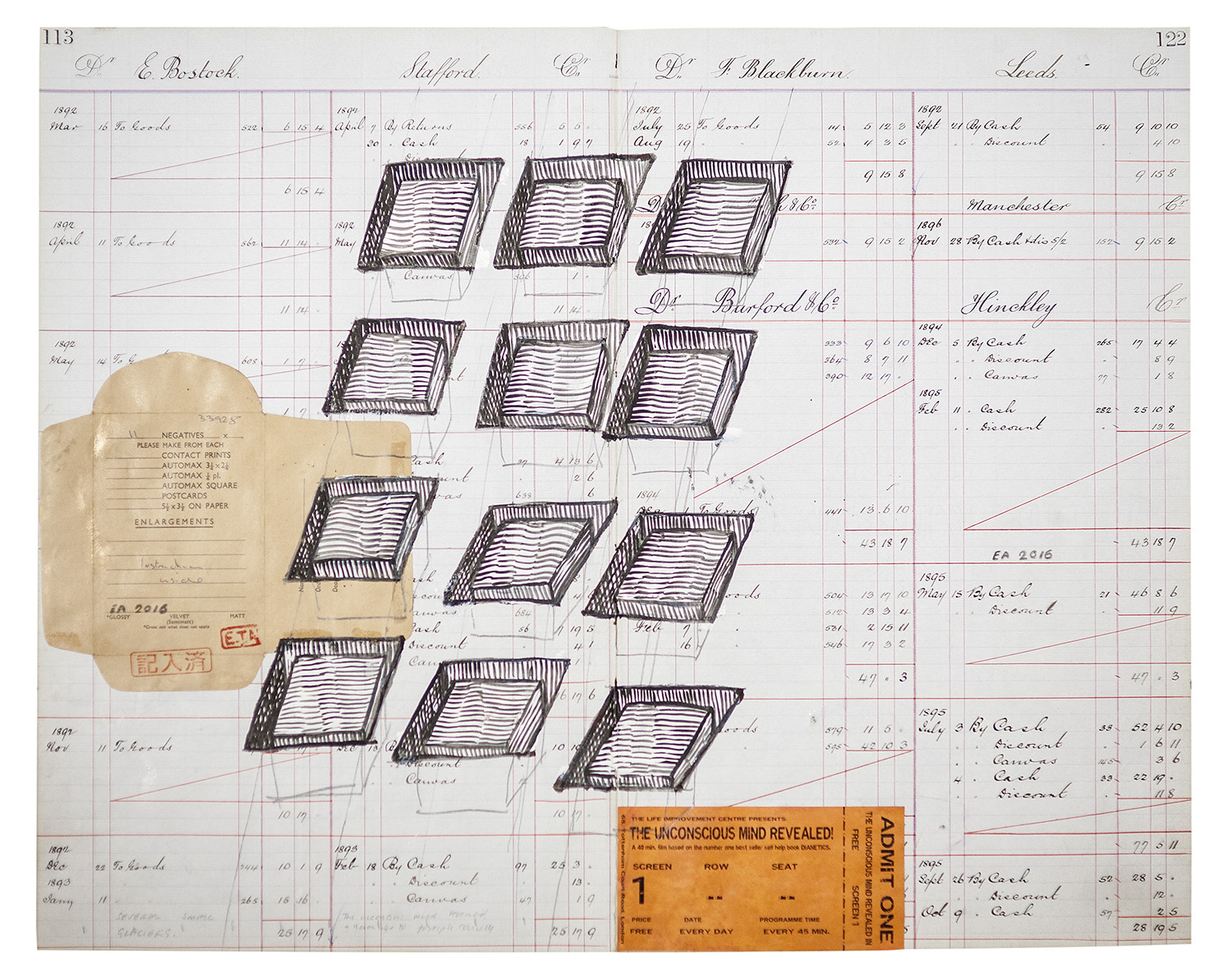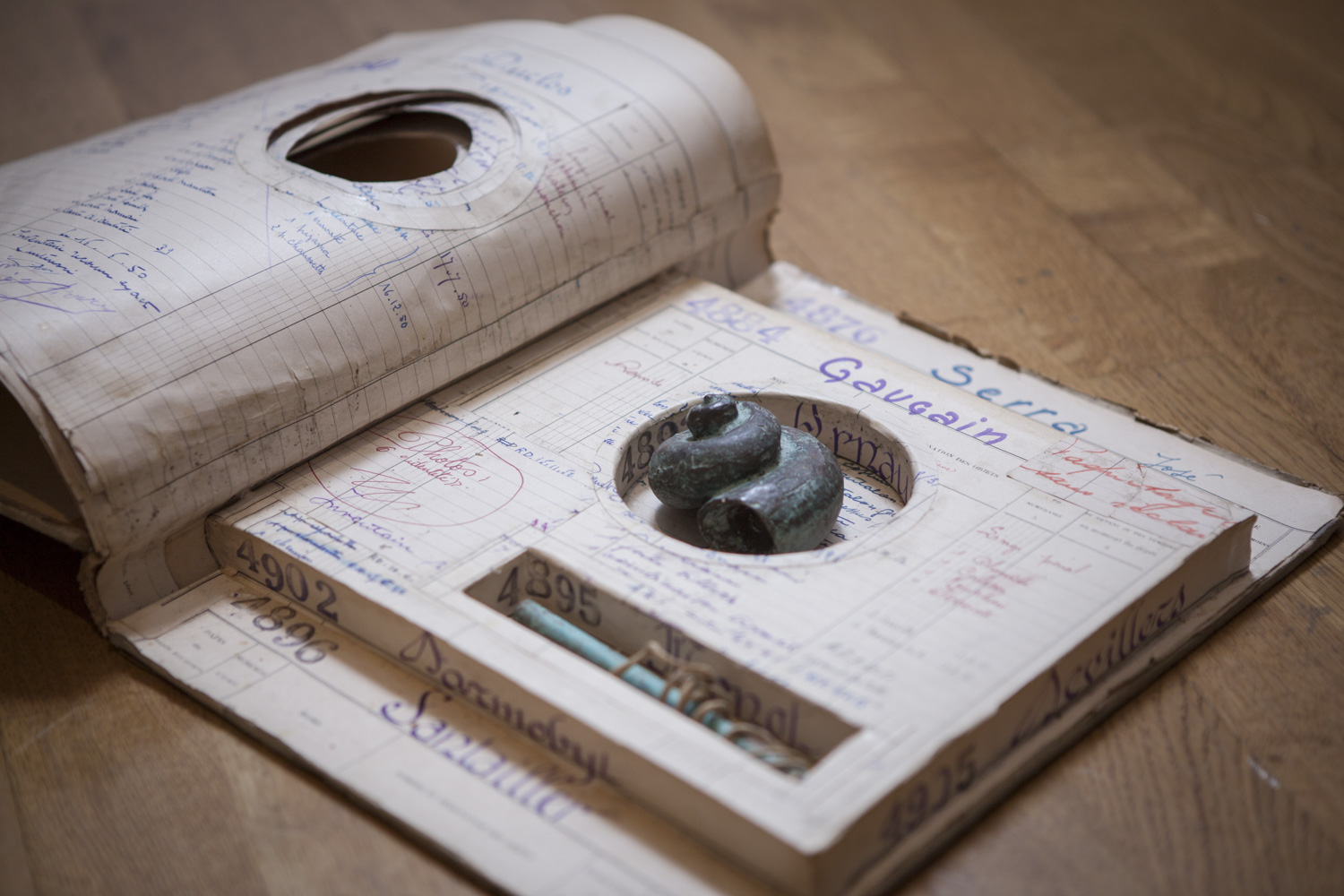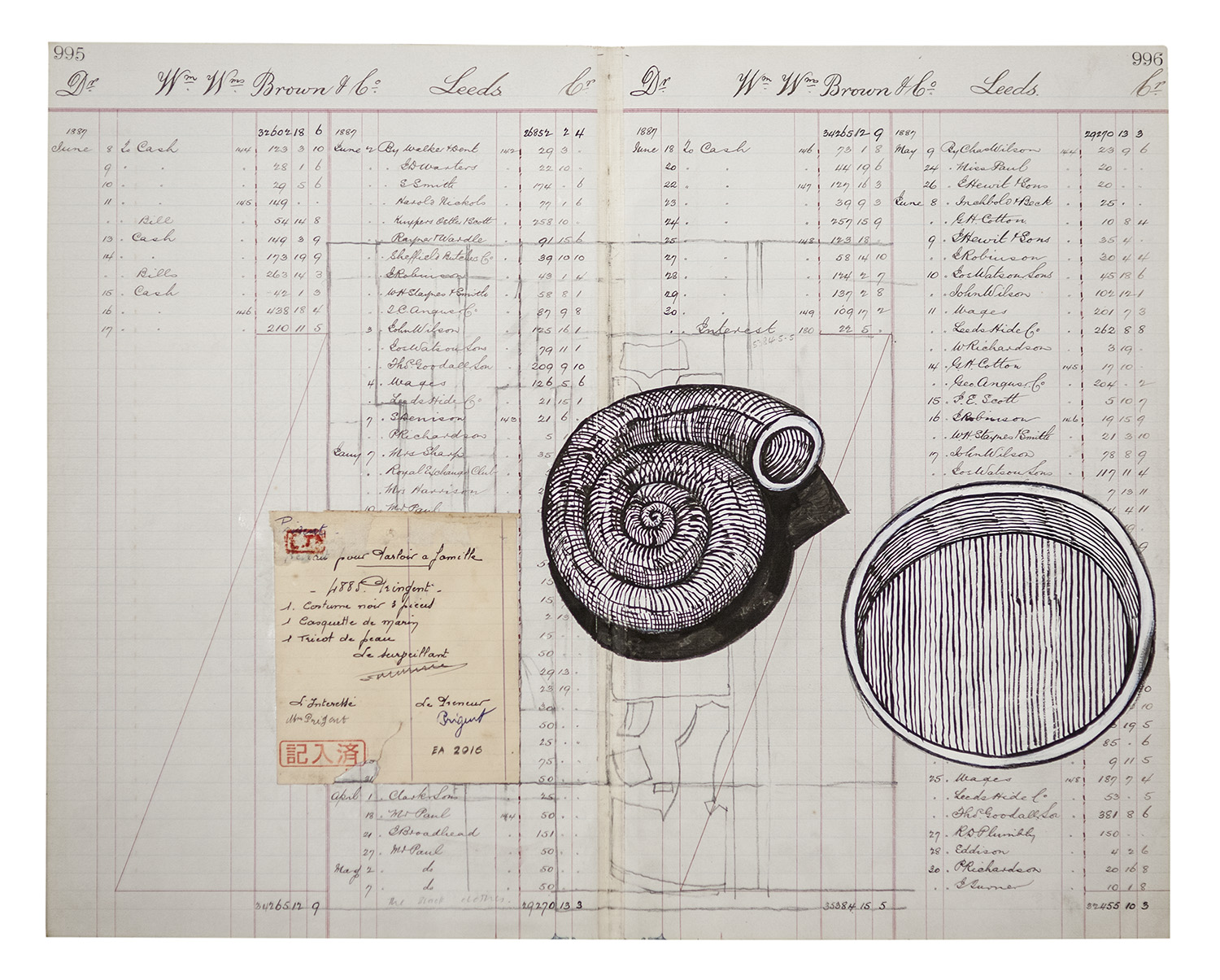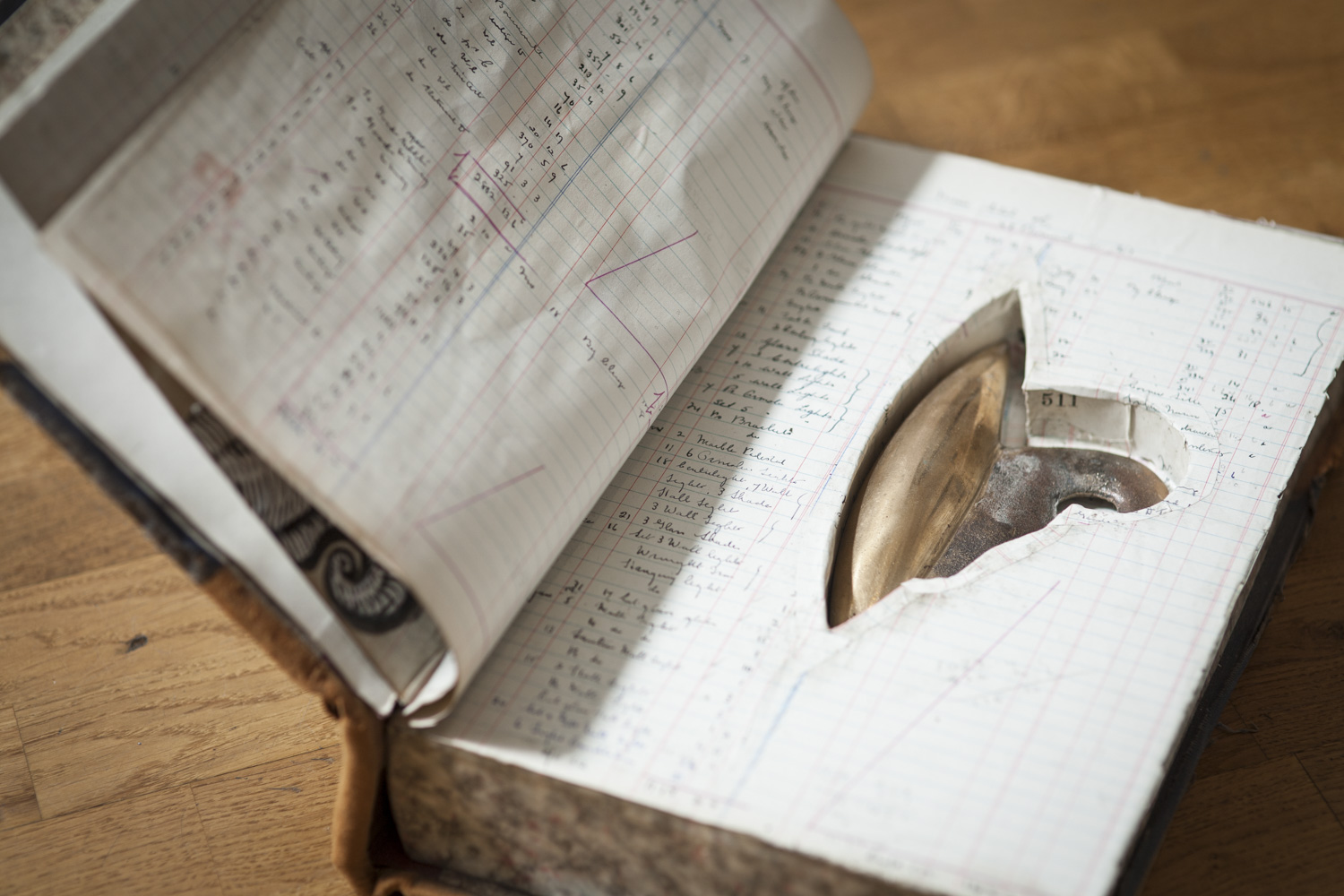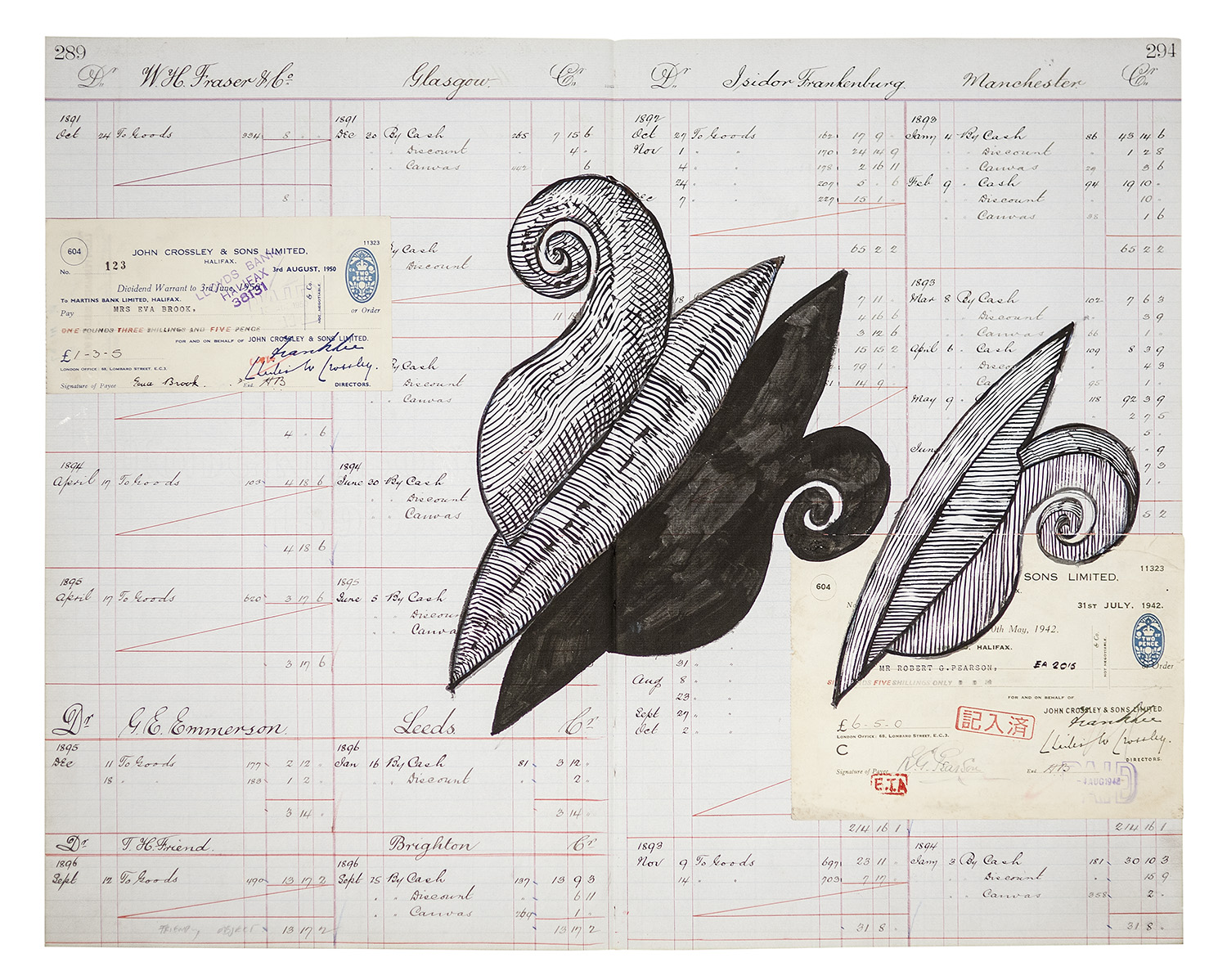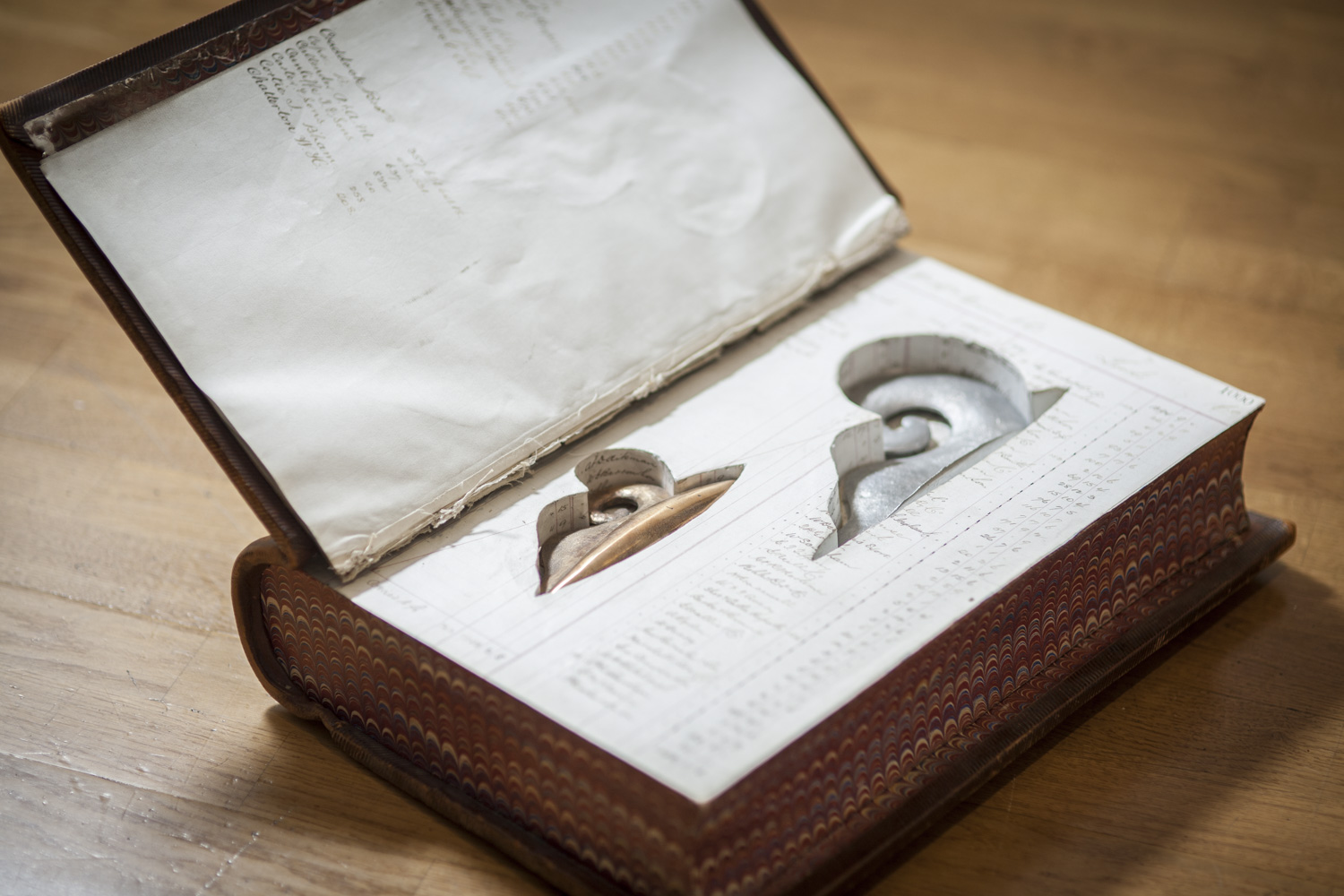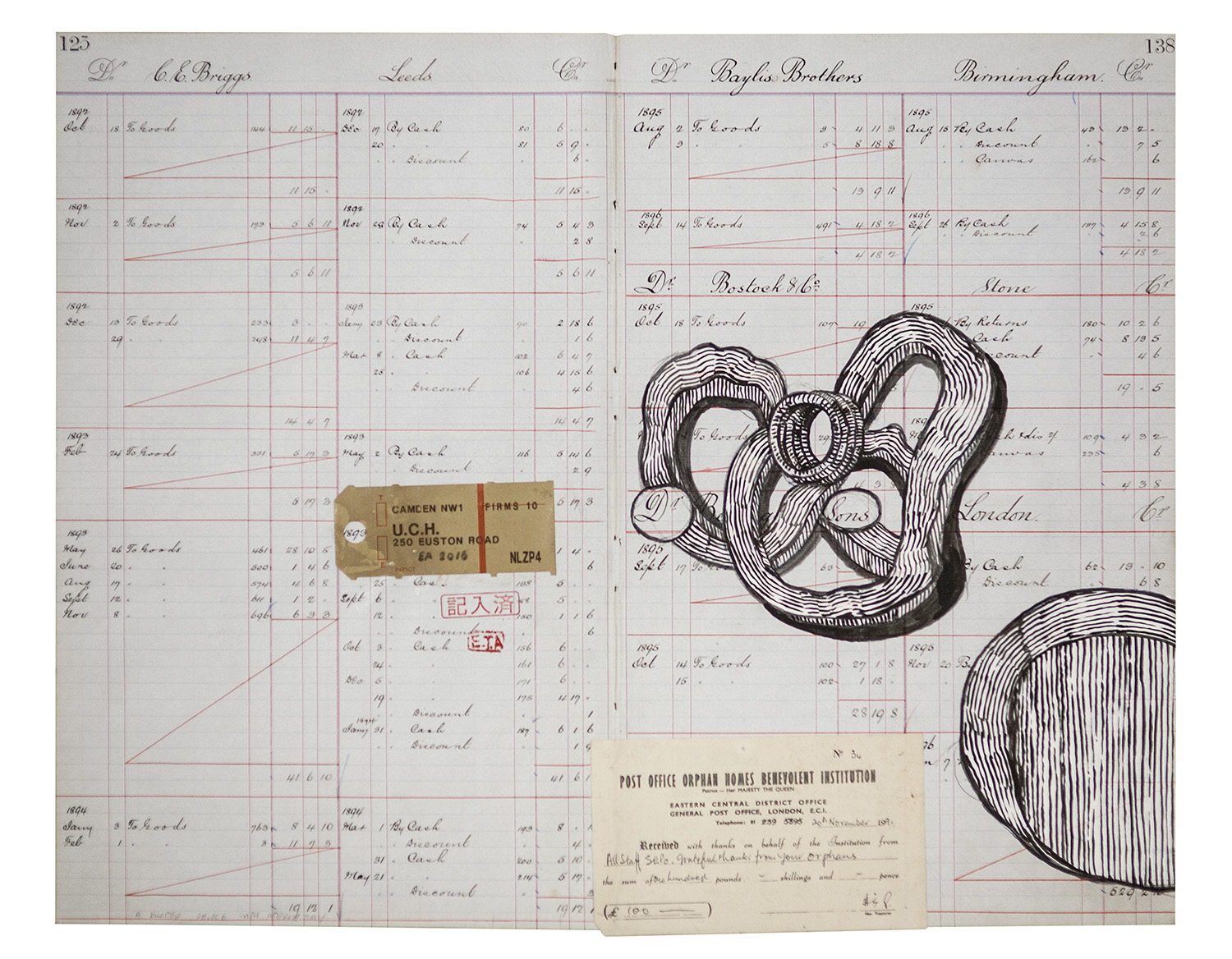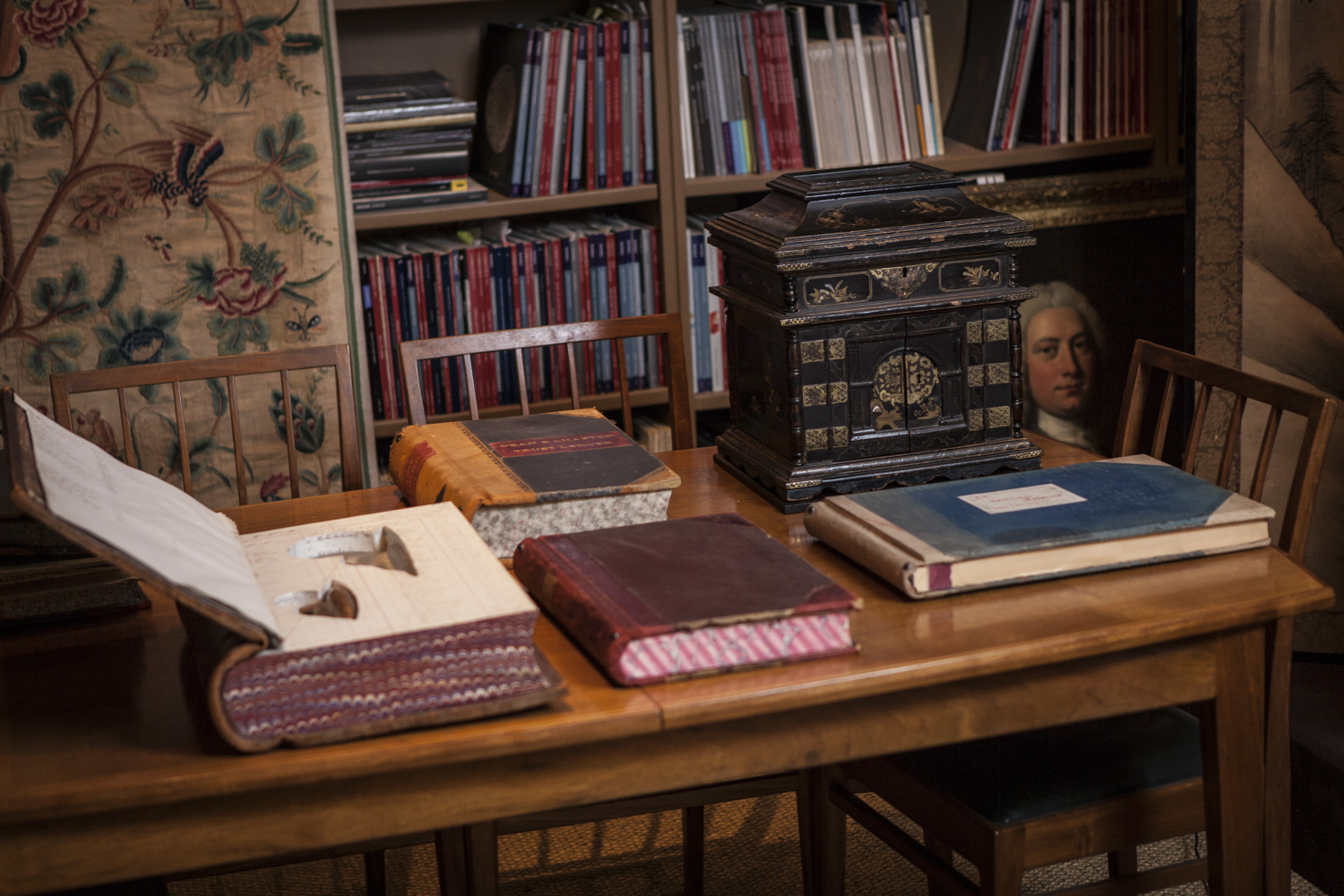Edward Allington: The Hidden Sculptures
67 Jermyn Street
30th June – 5th August 2016
Nestled in the downstairs of antiquarian dealers Harris Lindsay, Megan Piper is pleased to present The Hidden Sculptures by Edward Allington. The exhibition comprises seven recent ‘book works’ and seven accompanying drawings. The book works, containing concealed sculptures, are presented in the gallery’s library as an installation – these works link Allington’s two practices of drawing and sculpture.
Allington has been collecting antique ledgers for over thirty years. The ledgers, filled with handwritten rows of accounts, document a business’s everyday financial history – once useful but now redundant. Allington carefully removes the completed pages of the books and uses them as the basis for his ink and emulsion drawings. The drawings reflect Allington’s own interest in history – rococo-inspired scrolls, imagined forms and measuring devices, wreath-like knots of ribbon – motifs carefully positioned above the formal rows of numbers and text. Allington enjoys the contradiction between his illusionistic style and the paper. When looking at the black and white drawings on the aged pages, it’s impossible to read the writing when looking at the drawing and difficult to see the drawing when reading the writing. The work is serious yet a playfulness persists. Floating forms find impossible shadows beneath them, giving the work a surreal quality. Cheques and other dated items are collaged onto the meticulously completed pages – history is layered and its fragmentation prevails.
Allington’s book works use the structure of the complete ledgers – he reconstructs the interior and creates small recesses in which to conceal his sculptures, pointing out that these works are ‘ideal for concealing within the library for illicit enjoyment’. In this exhibition the hidden sculptures are presented as rare books to be discovered in the library and handled with gloves. To reveal the sculptures, the viewer must carefully open the books. Far from being nostalgic, the works have an otherworldly aesthetic. The grid of glass ice cubes (‘glaciers’) that is placed in one of the ledgers pays homage to Joseph Cornell. In another work, a hard bronze shell – a classically exterior structure – sits inside a prison ledger that records details of detainees’ clothing.
The first time Allington exhibited one of his book works was in Nagoya in 1991. His longstanding interest in Japanese culture and history is echoed in the book works. The oldest Buddhist temple in Japan (built in the 7th century) is Zenko-ji, in Nagano – it contains a hidden Buddha statue (hibutsu) that, in accordance with the rules of the temple, cannot be viewed. The rules demand the absolute secrecy of the statue, prohibiting it to be shown to anyone, including the chief priest. An element of this is captured in these works and, perhaps, it is not necessary to view the hidden sculptures to understand their significance. Since the 1990s Allington has made regular trips to Japan and its influence can also be seen in the drawings, which are, ironically, stamped with a Japanese bureaucratic stamp – kinyu zumi, which loosely translates to ‘it is finished’ – a punctuation mark in the history of the paper.


